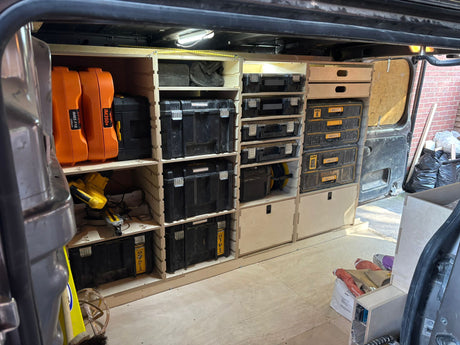If we look at construction, building maintenance, and fieldwork through the lens of past, present, and future, we can see a fascinating evolution that mirrors broader technological, social, and economic changes. Similar to how innovation has played a role in other fields, the construction industry has experienced cycles of transformation, disruption, and adaptation over time. Let's break it down:
1. Past: Manual Labor and Traditional Methods
In the past, construction and fieldwork were dominated by manual labor and simple, often rudimentary tools. Large infrastructure projects such as the Pyramids of Egypt, the Roman aqueducts, and medieval cathedrals were feats of human engineering, relying heavily on physical labor, basic machinery, and expertise passed down through apprenticeships. Key features of construction in the past include:
- Hand Tools: Construction relied on manual hand tools like hammers, saws, and chisels. Workers’ physical abilities and craftsmanship determined the speed and quality of work.
- Traditional Materials: Building materials like stone, wood, and later, bricks and mortar were dominant. Techniques were labor-intensive, and projects could take decades or even centuries to complete (e.g., Gothic cathedrals).
- Master-Apprentice System: Skills were learned through long-term apprenticeships, where workers developed expertise over many years. This meant the knowledge base was often limited to what was passed down through generations.
Despite being labor-intensive, the construction industry in the past achieved marvels of engineering, but it also was slow-moving, heavily reliant on human endurance, and prone to delays or errors due to lack of technology.
2. Present: Mechanization, Modernization, and Technology Integration
The construction and building maintenance fields today have been revolutionized by technology, making the work faster, safer, and more efficient. In the 20th and 21st centuries, key developments have changed how construction is approached:
- Mechanized Equipment: The invention of power tools, cranes, bulldozers, and excavators replaced manual labor in many aspects. Heavy lifting, digging, and material transport are now done by machines, reducing physical strain and increasing project speed.
- Materials Science: New materials such as steel, reinforced concrete, and high-performance composites have allowed for the construction of taller, stronger, and more durable buildings. Materials are lighter, more sustainable, and more efficient.
- Digital Technology: The rise of Computer-Aided Design (CAD), Building Information Modeling (BIM), and Geographic Information Systems (GIS) has transformed the planning and execution of construction projects. These technologies allow for precise planning, 3D modeling, and virtual simulations before actual construction begins, minimizing errors and delays.
- Automation & Prefabrication: Automation in production and the rise of prefabricated building components have allowed for faster assembly on-site. Prefabrication ensures consistency and quality while reducing on-site construction time.
- Green Building & Sustainability: The modern era has also seen a focus on sustainability, with green building certifications like LEED (Leadership in Energy and Environmental Design). Energy-efficient designs, environmentally friendly materials, and the push toward carbon-neutral buildings are part of modern construction practices.
The present phase of construction is characterized by a shift from hands-on craftsmanship to a technology-driven industry where efficiency, precision, and sustainability are key. Many construction workers today are as likely to interact with software and robotics as they are with hammers and drills.
3. Future: Robotics, AI, and Sustainability
Looking toward the future, construction and building maintenance will likely undergo even more dramatic changes. With the advent of artificial intelligence, robotics, and advanced materials, the industry may look very different in just a few decades:
- Automation and Robotics: In the future, we can expect increased reliance on robotics for construction. Robots that can lay bricks, 3D-print buildings, or autonomously perform maintenance are already in development. These robots will reduce the need for human workers in dangerous or physically demanding roles, while also speeding up project timelines.
- 3D Printing: Large-scale 3D printers are already being used to build houses in a matter of days. As this technology advances, it could become commonplace for construction projects, allowing for custom, on-demand building designs and reducing material waste.
- Smart Buildings and IoT Integration: Buildings will increasingly be equipped with smart technologies, including sensors, the Internet of Things (IoT), and AI. Smart systems will monitor energy use, detect maintenance needs, and automatically regulate environmental controls. Maintenance workers of the future will likely interact more with data and diagnostics software than with manual tools.
- Sustainability and Circular Economy: The future of construction will also be shaped by the need for sustainable practices. Materials that can be recycled or reused, zero-emission buildings, and off-the-grid, energy-efficient designs will become increasingly standard. The concept of a circular economy, where building materials are reused or repurposed at the end of a structure’s life cycle, will take root.
- AI in Project Management: Artificial intelligence will play a significant role in project management, from predictive analytics that prevent cost overruns to AI-driven scheduling systems. AI could also assist in real-time monitoring of construction sites, identifying potential safety hazards or quality issues before they become major problems.
Historical Repetition in Construction:
Similar to other industries, the construction field has seen cycles where new technologies replaced older methods, only to be followed by another round of innovation. For example:
- Industrial Revolution (19th Century): The mechanization of tools and the introduction of steam power led to faster construction and the rise of skyscrapers, similar to how modern power tools and machinery transformed construction in the 20th century.
- The Computer Age (Late 20th Century): The introduction of CAD and BIM during this time mirrors how future technologies like AI, robotics, and 3D printing are set to revolutionize the field.
In both past and future, technological advances have led to major leaps in efficiency and scale, with each wave of innovation enabling more ambitious construction projects.
Conclusion:
The construction and building maintenance industry is one where history continually repeats itself in cycles of innovation and technological disruption. From manual labor-intensive projects of the past to mechanized and digitized processes today, and potentially fully automated and AI-driven workflows in the future, the field is constantly evolving. This mirrors broader patterns of technological progress seen across other sectors, where the tools and methods may change, but the core goals of efficiency, sustainability, and craftsmanship remain constant.









